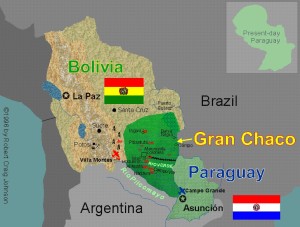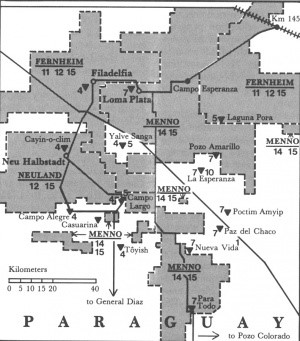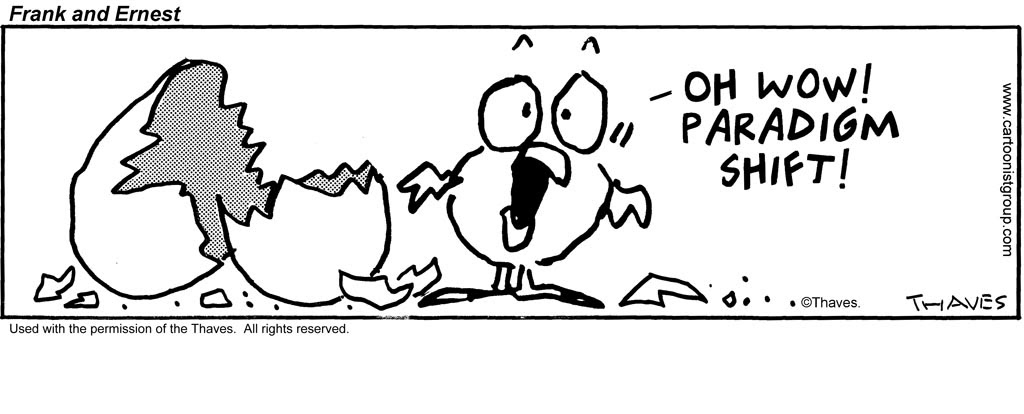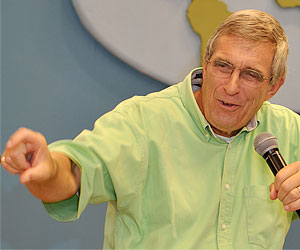People often ask us, “Can you really disciple a nation? Is it really true that nations can be transformed, desolate lands can become gardens?”
Our answer is a resounding “Yes!” But there’s a vital piece that must be in place, a key, if you will: God is the primary worker and he acts in response to the obedience of his people. 2 Chronicles 7:14 places the emphasis where it belongs: “If my people, who are called by my name, will humble themselves and pray and seek my face and turn from their wicked ways, then I will hear from heaven, and I will forgive their sin and will heal their land.” It is God that heals the land and builds nations. But his work is in response to the faithful obedience of his children.
We have sought to chronicle how God has used individuals and groups to transform the land and their nation in a relatively short period of time. We have posted some of these examples on the Disciple Nations Alliance website:
 Now we want to draw attention to a remote part of Paraguay, the Gran Chaco, known as “The Green Hell” because of its inhospitable nature. In the 1920’s a group of impoverished refugees settled here and, in less than 100 years, transformed a wasteland into a garden. We began to tell this story in an earlier post. Now, in a new series of blog posts we want to tell the story of how God used a group of poor refugees, with virtually no natural resources to create a flourishing land that supplies food and commodities not only to their nation of Paraguay, but also exports the same to Europe.
Now we want to draw attention to a remote part of Paraguay, the Gran Chaco, known as “The Green Hell” because of its inhospitable nature. In the 1920’s a group of impoverished refugees settled here and, in less than 100 years, transformed a wasteland into a garden. We began to tell this story in an earlier post. Now, in a new series of blog posts we want to tell the story of how God used a group of poor refugees, with virtually no natural resources to create a flourishing land that supplies food and commodities not only to their nation of Paraguay, but also exports the same to Europe.
The Gran Chaco spans 400,000 square miles in four South American nations—Argentina, Paraguay, Bolivia, and Brazil. The Chaco is the largest dry forest in South America. Its hot and semi-arid lowland, intermixed with marshland, is sparsely populated. This inhospitable area has the descriptive title of “The Green Hell.”
Before the Mennonites arrived the Chaco was an uninhabited wasteland. The soil was infertile and the water had a high saline content. European settlers to Brazil, Paraguay, Bolivia, and Argentina found the land unwelcoming. They chose not to settle there. About 500 indigenous people eked out an existence that could be more accurately described as near starvation.
In 1536, Menno Simons, an Anabaptist reformer, founded the Mennonite Church. The rallying cry of the Mennonites was, “ For true evangelical faith … cannot lie dormant; but manifests itself in all righteousness and works of love; it … clothes the naked; feeds the hungry; consoles the afflicted; shelters the miserable; aids and consoles all the oppressed; returns good for evil; serves those that injure it; prays for those that persecute it.”
The Mennonites were often mistreated. Their persecutions drove them from Germany and Holland to immigrate to Russia, Canada, and the United States. During subsequent persecutions, wave upon wave of Mennonites moved to the barren lands of the Paraguayan Chaco. The first wave arrived from Canada in 1927. The second wave traveled from the Soviet Union in 1930, fleeing the Bolshevik Revolution. A third wave from Russia arrived in 1947, following the displacement of World War II. In 1948 more Canadian Mennonites immigrated. Finally in the 1960’s small numbers of Mennonites moved from Mexico and Switzerland.
 They founded five colonies in the heart of the vast Chaco: Menno, Fernheim, Neuland, Friesland, and Volendam. See the graphic.
They founded five colonies in the heart of the vast Chaco: Menno, Fernheim, Neuland, Friesland, and Volendam. See the graphic.
After eighty years of Mennonite faith and labor the Chaco had been transformed. That’s the report from researcher, and food & resource economist Kate Pankowska. In June 2014, Ms. Pankowska wrote an article, “Paraguayan Chaco- The Story of Thorn Forest or Cattle Ranchers?” She describes how the Mennonites transformed a desert into a garden.
In March 2012, I visited Paraguayan Chaco and had a chance to see it all with my own eyes. I managed to talk to some Mennonites living there and to see what they had built over these last eighty years since they started to settle in the region. Frankly, I was quite impressed by how they had organized their lives in the middle of nowhere with a desert-like climate (it was above 40 degrees Celsius at that time, so I know how the “green hell” can be). During my stay in the area of Filadelfia I visited a dairy farm with state of the art equipment for milk storage. Children were running barefoot around a well maintained farm house that had a very ordered and clean front and backyard. I talked to a dairy farmer, who owned the farm. With pride he told me about his cooperation with dairy scientists from Quebec to improve genetic material of his Holstein cows.
In the city, in Filadelfia I saw many things, including a Mennonite-run hospital that was just about to gain a new wing for an intensive care unit, the booming service industry in the city, Mennonite-run museums, impressive schools, restaurants, and clean streets, a rare find for Paraguay. I went through an impressive milk processing facility in Loma Plata, visited a highly mechanized processing factory of maní, and drunk [sic] water from the reverse osmosis system installed by the Mennonite cooperative in Filadelfia. As I found out later, it was all maintained internally by Mennonites, without any help from the Paraguayan government. The local people that I talked to told me the following: “the government comes here only to collect taxes and doesn’t do anything else”.
Pankowska shares her concern that not everything the Mennonites are doing is good. (Go here to read more.)
How did the descendants of German and Dutch followers of Menno Simons transform the Green Hell into a garden?
Edgar Stoesz’ book Like a Mustard Seed tells the story of the Mennonites’ effort to heal the land. Stoesz identifies nine principles that, when applied, transformed the wasteland into a garden that exports food and products throughout Paraguay and as far as Europe.
We will explore Stoesz’s nine principles:
- The Church – providing the spiritual foundation for the society
- Community – cooperatives provided the economic engines for the flourishing
- Road – connected the colonies to the larger world
- Banking – leveraging the hard work of the people
- Scientific Agriculture – appling science to food production
- The dignity of women – it would not have happened without women
- Health – addressing the practical need to stay alive
- Education – preparing the next generation for life and work
- Connection to a capital city
We will endeavor to follow Stoesz’s book in order to highlight another model for how God can work through a faithful people to transform the land, to make it flourish, to reach its full potential. If you work among the poor, or come from a poor community and want to see your community transformed, come and explore with us the Mennonite model to see what you might appropriate for your situation.
- Darrow Miller
This post is first in a series on the transformation of the Gran Chaco in Paraguay.
Related posts:
Husband and Husbandry: Preserving and Protecting
Why Cities Should Reflect the New Jerusalem






6 Comments
Jon
November 26, 2014 - 10:53 amWell that’s exciting and inspiring!
I want in.
🙂
Marti
January 12, 2015 - 3:43 pm“They founded five colonies in the heart of the vast Chaco: Menno, Fernheim, Neuland, Friesland, and Volendam.”
Friesland and Volendam are not in the Chaco, but in East Paraguay.
admin
January 13, 2015 - 1:35 pmHi, Marti, thanks for your note. I have no basis for countering your correction, so if we got the geography wrong please excuse our error.
Gary Brumbelow